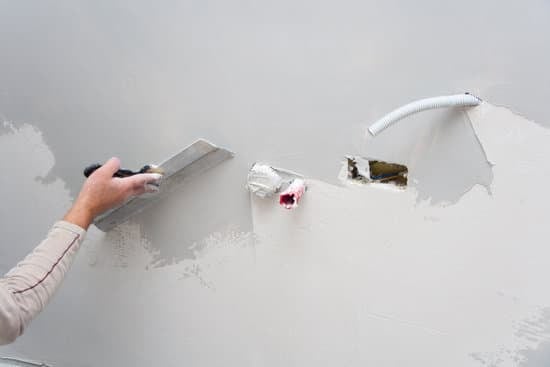Is the home improvement industry growing? The home improvement industry plays a significant role in the economy, encompassing a wide range of products and services that cater to homeowners’ needs. From renovation and remodeling to landscaping and home maintenance, this sector has experienced steady growth in recent years, driven by various factors such as consumer spending habits, technological advancements, and the evolving preferences of homeowners.
The market analysis of the home improvement industry provides valuable insights into its current size and scope, including recent trends and growth projections. In addition to discussing the industry’s expansion, this article will explore the reasons behind its growth, such as increased consumer spending, housing market trends, and the rise of DIY culture. Furthermore, it will address challenges and opportunities faced by the industry, as well as provide insights into its future outlook and potential for innovation.
This article aims to delve into various aspects of the home improvement industry, from technological advancements to sustainability and green building practices. By examining these factors alongside consumer behavior and market dynamics, we can gain a comprehensive understanding of how the industry is evolving and what opportunities lie ahead for businesses and consumers alike.
Market Analysis
The home improvement industry is experiencing significant growth, with the global market size expected to reach $1,120.31 billion by 2025, according to a report by Grand View Research. This growth is driven by various factors such as increasing disposable income, a growing population of homeowners, and a rising trend of DIY projects. In addition to this, the aging housing stock in many developed countries is also fueling the demand for renovation and remodeling activities.
One of the key trends in the home improvement industry is the focus on smart and sustainable solutions. With the increasing awareness about environmental conservation and energy efficiency, there is a growing demand for eco-friendly and green building materials. This trend has been further accelerated by government initiatives and incentives that promote sustainable construction practices.
Another important aspect of market analysis within the home improvement industry is the impact of e-commerce. The convenience of online shopping has transformed consumer behavior, leading to an increasing number of homeowners purchasing home improvement products and tools online. This shift towards digital platforms has also opened up new opportunities for retailers and manufacturers to reach a broader customer base.
Relevant Data
| Global Home Improvement Market Size | $1,120.31 Billion by 2025 |
|---|---|
| Key Industry Trend | Focus on smart and sustainable solutions |
| Impact of E-Commerce | Rising trend of online purchase for home improvement products |
Factors Driving Growth
The home improvement industry is experiencing significant growth due to several key factors. These include increased consumer spending, housing market trends, and the rise of DIY culture. This section will delve into each of these drivers and their impact on the industry’s expansion.
Firstly, increased consumer spending has been a major catalyst for the growth of the home improvement sector. As the economy continues to recover from past downturns, consumers have shown a willingness to invest in their homes. Whether it’s renovating outdated kitchens or upgrading bathrooms, homeowners are allocating more resources towards home improvement projects. This higher level of investment not only benefits individual households but also contributes to overall economic growth.
Secondly, housing market trends play a crucial role in driving growth within the home improvement industry. As real estate markets continue to heat up in many areas, homeowners are looking for ways to increase the value of their properties.
This has led to an uptick in demand for remodeling and renovation services as well as home improvement products. Additionally, as more people choose to stay in their homes longer rather than move, they are increasingly willing to invest in upgrades and renovations.
Lastly, the rise of DIY culture is another significant factor contributing to the expansion of the home improvement industry. With the proliferation of online tutorials, guides, and instructional videos, more individuals are taking on home improvement projects themselves. This shift has not only driven sales for home improvement retailers but has also sparked innovation in new product offerings specifically tailored to DIY enthusiasts.
Technological Advancements
The home improvement industry is constantly evolving, and one of the key drivers of this growth is technological advancements. Today, technology plays a vital role in the home improvement sector, influencing everything from how consumers research and purchase products to the development of innovative solutions for sustainable and eco-friendly living spaces. The impact of smart home devices and online platforms on the industry cannot be understated.
Smart home technology has revolutionized the way homeowners interact with their living spaces. From smart thermostats and lighting systems to automated security and surveillance, these devices offer convenience, energy efficiency, and peace of mind. As a result, the market for smart home devices is projected to continue growing as more consumers embrace the idea of a connected and automated home.
Furthermore, online platforms have become a pivotal tool for both consumers and businesses in the home improvement sector. E-commerce websites and mobile apps provide an extensive range of products and services at the click of a button, making it easier than ever for homeowners to access information, compare prices, read reviews, and make purchases.
This digital transformation has not only streamlined the shopping experience but has also opened up new avenues for businesses to reach customers and expand their market reach.
| Key Technological Advancements | Impact on Home Improvement Industry |
|---|---|
| Smart Home Devices | Revolutionizing how homeowners interact with their living spaces; offering convenience, energy efficiency & peace of mind. |
| Online Platforms | A pivotal tool for both consumers & businesses; streamlining shopping experience & opening new avenues for business growth. |
Challenges and Opportunities
The home improvement industry is constantly facing challenges and opportunities that impact its growth and evolution. One of the main obstacles currently affecting the industry is the shortage of skilled labor. This shortage has been attributed to factors such as an aging workforce, lack of interest in trade jobs among younger generations, and immigration policies affecting the availability of workers. As a result, many companies are struggling to find qualified workers, leading to delays in projects and increased costs.
Another significant challenge for the home improvement industry is supply chain issues. The COVID-19 pandemic highlighted vulnerabilities in global supply chains, leading to disruptions in the availability of construction materials and products. Issues such as increased demand, production slowdowns, transportation delays, and rising costs have impacted both large and small businesses within the sector.
Despite these challenges, there are also numerous opportunities for innovation and new market opportunities within the home improvement industry. With advancements in technology, there is potential for the development of more efficient and sustainable building materials and practices. Additionally, there is a growing demand for smart home devices and energy-efficient solutions, presenting opportunities for companies to create innovative products that cater to this trend.
Furthermore, the rise of online platforms has opened up new avenues for reaching consumers and conducting business within the industry. From e-commerce platforms selling home improvement products to virtual design services offering remote assistance with renovation projects, technology is enabling companies to expand their reach and enhance customer experiences.
Overall, while the home improvement industry faces significant challenges such as labor shortages and supply chain issues, it also presents ample opportunities for innovation and growth through technological advancements and evolving consumer preferences. By addressing these obstacles proactively and leveraging emerging trends, businesses within this sector can position themselves for success in a rapidly changing market.
Sustainability and Green Building
The home improvement industry is seeing a significant increase in the demand for sustainable and green building solutions. This growing interest in eco-friendly and energy-efficient options is not only driven by environmental concerns but also by the desire for cost-effective and long-term solutions. As more homeowners become conscious of their carbon footprint, the market for sustainable home improvement products and services continues to expand.
Consumer Demand for Eco-Friendly Solutions
One of the key factors driving the growth of sustainability in the home improvement industry is the increasing demand from consumers. Homeowners are seeking environmentally friendly alternatives for their renovation and remodeling projects, including energy-efficient appliances, sustainable building materials, and eco-conscious design principles. This shift in consumer behavior is reshaping the market as businesses strive to meet this demand by offering a wider range of green options.
Impact on Industry Growth
The focus on sustainability is not only influencing consumer choices but also shaping the trajectory of the home improvement industry as a whole. Companies that prioritize eco-friendly practices and products are gaining a competitive edge in the market, attracting environmentally conscious customers and differentiating themselves from traditional counterparts. Additionally, government incentives and regulations promoting sustainable building practices are further driving industry growth and innovation in this sector.
The Role of Sustainable Practices
Sustainable practices in home improvement, such as energy-efficient renovations and eco-friendly construction techniques, are playing a crucial role in shaping the future of the industry. From reducing carbon emissions to minimizing waste generation, these practices are not only beneficial for the environment but also contribute to overall industry development.
As consumers increasingly prioritize sustainability in their home improvement projects, businesses that embrace green building practices are well-positioned to capitalize on this trend and drive further growth within the market.
Consumer Behavior
The home improvement industry is experiencing a significant shift in consumer behavior, with homeowners displaying a growing interest in renovation and remodeling projects. This change in preferences and purchasing habits is indicative of evolving priorities and values within the housing market.
### Shift Towards Renovation and Remodeling.
In recent years, there has been a noticeable shift in consumer behavior towards prioritizing renovation and remodeling projects over the purchase of new homes. Homeowners are increasingly choosing to invest in upgrading and customizing their current living spaces, rather than going through the process of buying a new property. This trend is influenced by various factors, including economic considerations, personalization preferences, and the desire for sustainability.
### Growing Interest in DIY Projects.
Another notable aspect of changing consumer behavior is the increasing interest in do-it-yourself (DIY) home improvement projects. With easy access to online tutorials, instructional videos, and DIY resources, homeowners are more inclined to take on renovation tasks themselves. This shift not only reflects a desire for cost-effective solutions but also signifies a deeper engagement with the concept of home improvement as a rewarding personal endeavor.
### Emphasis on Personalization and Customization.
Furthermore, consumer behavior within the home improvement industry is characterized by an emphasis on personalization and customization. Homeowners are seeking unique solutions that cater to their individual tastes and lifestyle needs. As a result, there is growing demand for customizable products and services that allow for greater creative expression within home renovation projects. This trend is reshaping the industry’s approach to product development and service offerings, catering to the evolving preferences of consumers.
As consumer behavior continues to evolve, it presents both challenges and opportunities for businesses operating within the home improvement sector. Understanding these changes provides valuable insights into adapting strategies to meet the demands of an increasingly discerning market.
Future Outlook
In conclusion, the home improvement industry is indeed growing, and its impact on the economy cannot be understated. As discussed in this article, market analysis shows that the industry has expanded significantly in recent years, with continued growth projected for the future. Factors such as increased consumer spending, housing market trends, and the rise of DIY culture have all contributed to this expansion, while technological advancements like smart home devices and online platforms have further propelled growth.
Despite facing challenges such as labor shortages and supply chain issues, the home improvement industry continues to present numerous opportunities for innovation and new market expansion. Sustainability and green building practices have also become increasingly important, with a growing demand for eco-friendly and energy-efficient home improvement solutions. This shift towards sustainable practices not only aligns with changing consumer behavior but also has the potential to further drive industry growth in the coming years.
Looking ahead, the future outlook of the home improvement sector is promising. With evolving consumer preferences and a burgeoning interest in home renovation and remodeling projects, there are ample opportunities for continued industry expansion. As technology continues to advance and sustainability remains at the forefront of consumer consciousness, it’s clear that the home improvement industry will not only continue to grow but also evolve in ways that will shape our homes and communities for years to come.
Frequently Asked Questions
What Is the Future of Home Improvement?
The future of home improvement looks promising as more homeowners invest in upgrading their properties. With advancements in technology and sustainable practices, the industry will likely see a shift towards eco-friendly solutions and innovative tools to streamline renovation processes.
What Is the Demand for the Home Improvement Industry?
The demand for the home improvement industry continues to grow as more individuals prioritize enhancing their living spaces. In response to changing lifestyles and the rise of remote work, there is an increased need for functional home offices, outdoor living areas, and energy-efficient upgrades.
What Is the Outlook for the Home Improvement Industry?
The outlook for the home improvement industry appears positive, with forecasts pointing to steady growth in the coming years. As homeowners increasingly value personalized and comfortable living spaces, the industry is expected to thrive by providing a wide range of products and services that cater to diverse consumer needs.

I’m thrilled to have you here as a part of the Remodeling Top community. This is where my journey as an architect and remodeling enthusiast intersects with your passion for transforming houses into dream homes.





